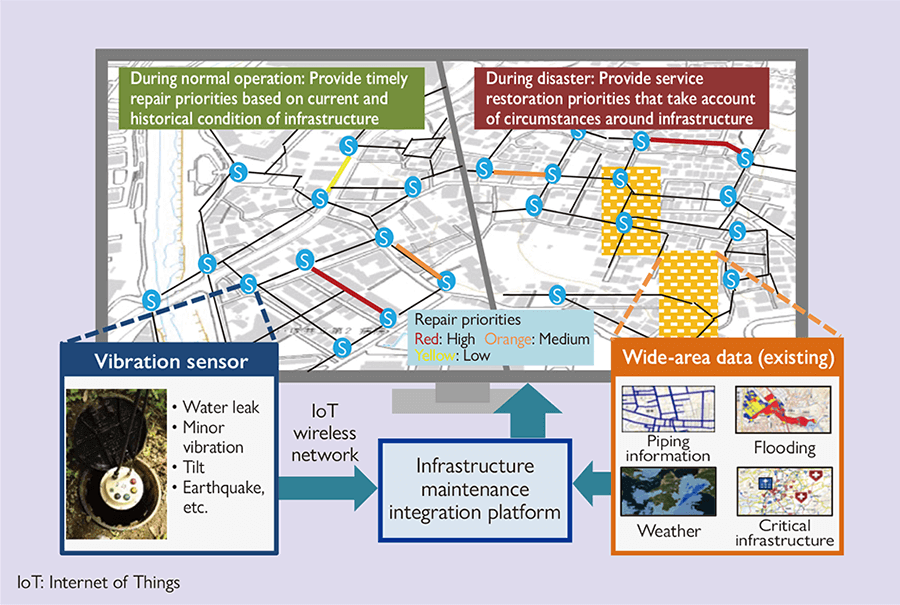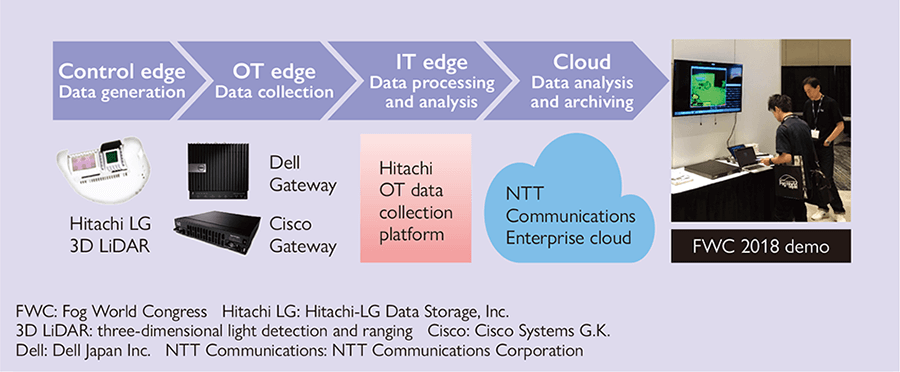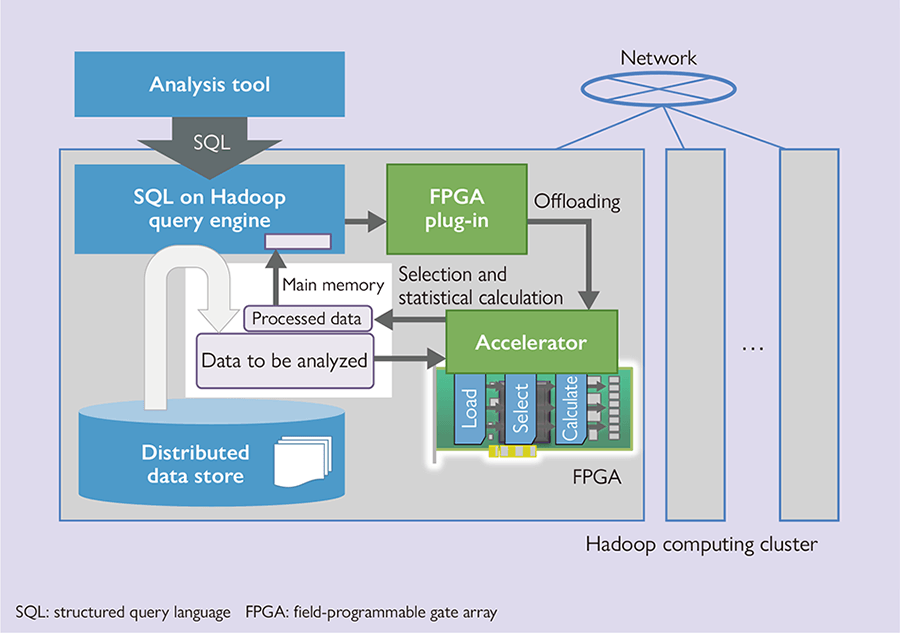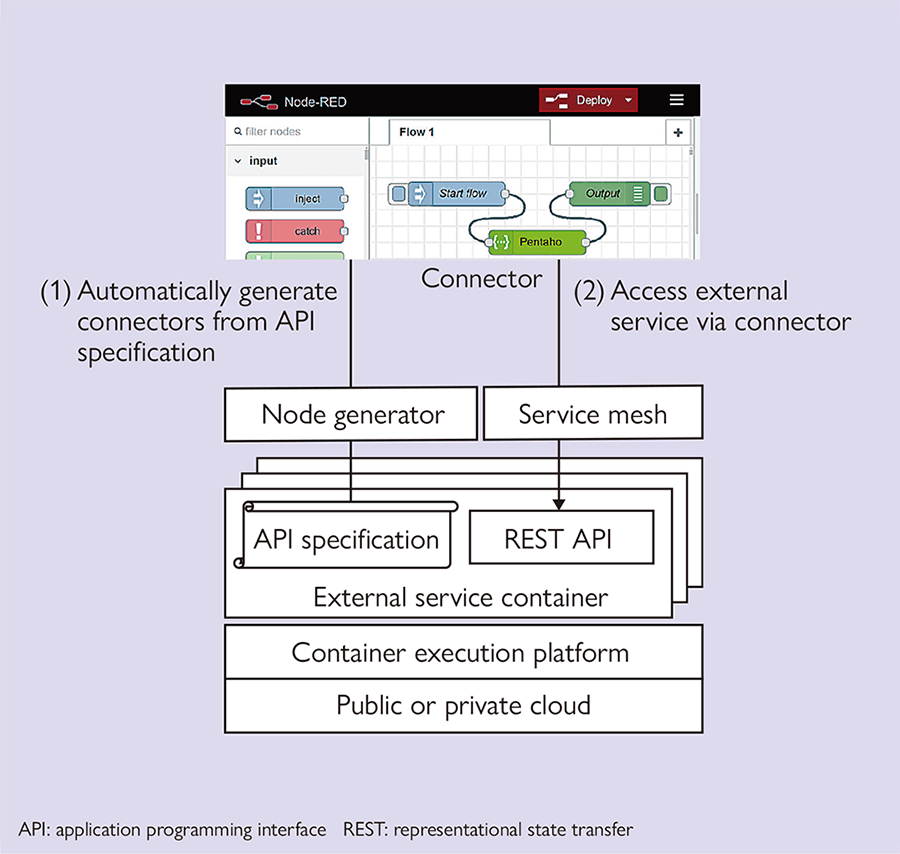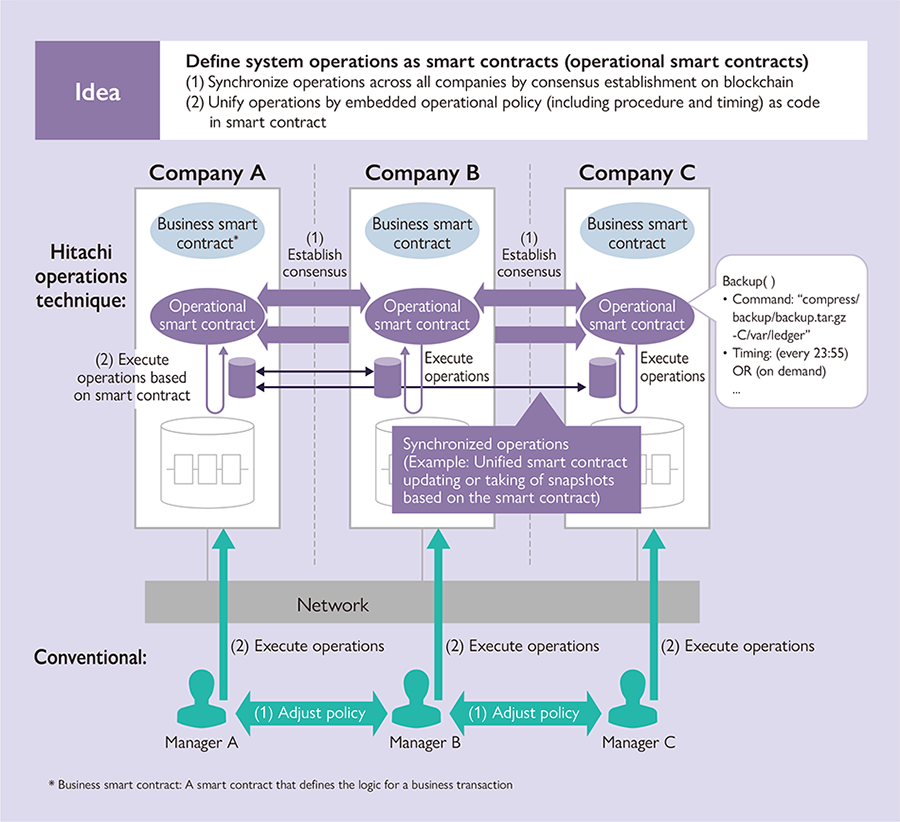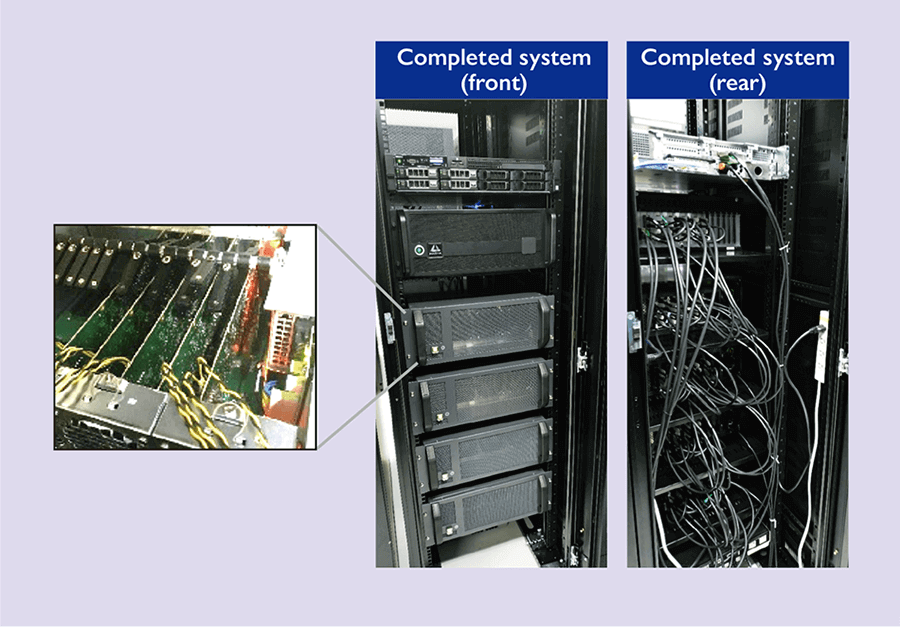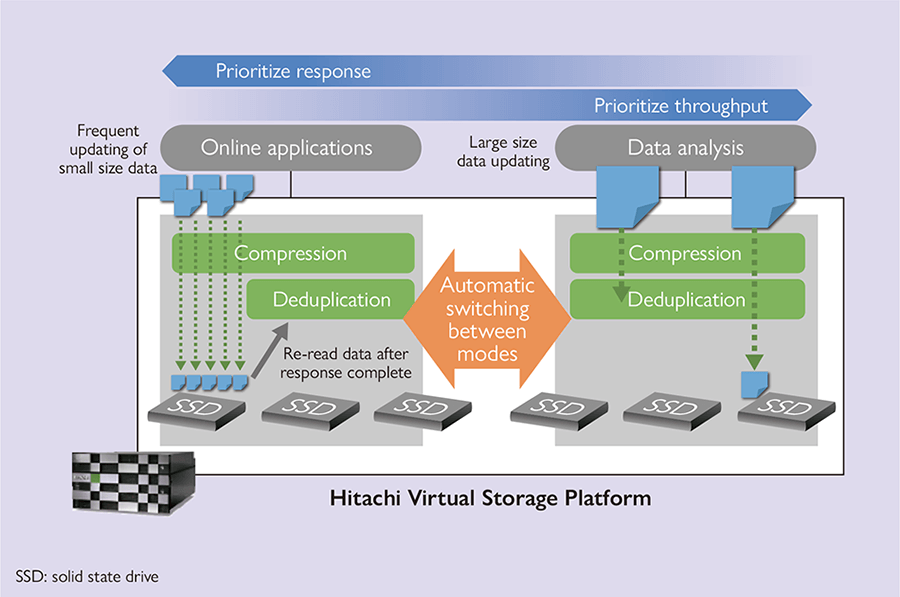1. AI Platform
Hitachi has put together an artificial intelligence (AI) platform that provides an effective way to go about solution development utilizing the latest AI techniques and to satisfy diverse customer requirements.
The core elements of the AI platform include open source software (OSS) for deep learning and other applications that make up the platform's suite of AI and analytics software, Hitachi's distinctive AI techniques [Hitachi AI Technology/H (AT/H) and machine learning constraint programming (AT/MLCP)], self-growing dialogue AIs, and explainable AIs that can explain their reasoning.
The platform also hosts data processing software required for preparing data for use in AI, including data cleansing and blending, and a hardware environment for effective computing that includes general-purpose computing on graphics processing units (GPGPU) and complementary-metal-oxide-semiconductor (CMOS) annealing machines. These elements are implemented in a research and development (R&D) cloud where not only can data scientists and researchers further enhance the platform, but people from business divisions can easily create and prototype new solutions.
The intention for the future is to make the environment available to customers and other partners and to build a solution ecosystem.









